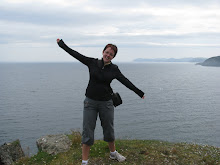October 14th, 2008
Reviewing some of the articles on using and creating open ended tasks, and thinking about what I have been learning about teaching through problem, I come across the suggestion to make the task in such a way that allows students to solve or explain the problem/solution in more than one way. Hmm, factors involve multiplying two numbers; composite numbers are numbers that have more than two factors, what in math do students already know that involves multiplying two numbers together that can be done in more than one way. Then it hit me, AREA! Create a problem that involves students looking at different areas and the dimensions (length and width) that make up that area. The areas that have only one set of factors would be prime and area that have more than one set of factors would be composite where the actual dimensions, length and width would be the factors.
So, now a problem. Well, it is late fall, almost Thanksgiving and people are digging vegetables, how about looking at possible dimensions and areas for a vegetable garden. So here is the question I posed to my grade six class:
My dad would love to grow vegetables. He really wants to get into gardening but is not sure how to go about planning the garden. He knows he would like to have a rectangular or square shaped garden, but does not know how big to have it. He has a few choices of places where he could plant his garden and would like to know all the possible dimensions his garden could be. He particularly wants to know about the areas that do not give him a lot of choice into how he can create the garden. Can you help him?
I modeled the problem on the board to ensure everyone knew what they had to do. I used the number 64 and questioned if dad wanted a garden with an area of 64 meters squared, would he have different ways of planting the garden. Students recognized that you could get different ways to plant a garden of area 64 meters and we began listing the factors, which at this point I did not identify them as factors, but as lengths and widths.
I then let students go about looking for the different areas of gardens and the possible dimensions. I paired students by ability and let them work anywhere in the classroom. I provided them with different maniplulatives such as multi-link cubes, square tiles, wooden sticks of varying lengths, graph paper, calculators and base ten blocks.
As students began their investigations, I noticed each group entered the problem at different levels and in different ways. One group was haphazardly choosing numbers randomly and finding all the possible dimensions for that area through trial and error of multiplying. Another group was starting at the area of 1 and working through each number finding possible dimensions. Yet another group was using graph paper to draw out the different possibilities of areas and using the calculator to check their answers. Another group was using the square tiles to figure out how to build rectangle and squares and recorded their findings. Soon, I started seeing and hearing more talk about how multiplication and division could be used to help find the factors. Others were finding out that many odd numbers, and no even numbers except for 2, only had one way of getting that area. (BINGO – prime numbers)
My task was to observe mathematics take hold of these students as their curiosity and engagement lead them to understand how to find factors of numbers and what a prime and composite number was without them even realizing it.

No comments:
Post a Comment